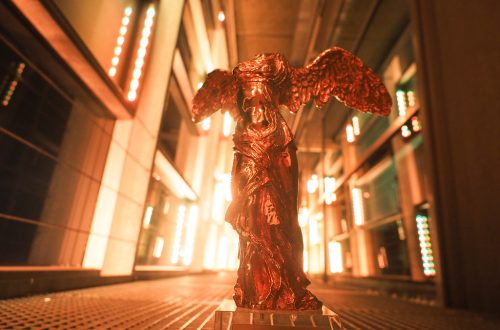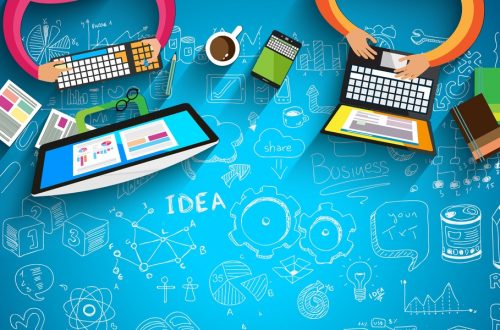
Can Artificial Intelligence impact art in the 21st century?
In early February, Aparajita Jain was standing in front of a blackboard in Bengaluru, brainstorming ideas on art and technology with two very creative minds—Lalitesh Katragadda, the creator of Google Maps India, and multidisciplinary artist and TED speaker Raghava K.K.—when it struck her: AI (Artificial Intelligence) had dipped its metaphoric toes into the realm of art. “We were working on a technological platform together in Raghava’s home in Bengaluru. Right then he told me that AI was creating art,” recalls Jain, who is the co-director of the Nature Morte gallery in Delhi.
It seemed absurd at first, but as it began to sink in, a very real possibility in the future. “I thought, ‘the creative space is supposed to belong to mankind, so where is the space for Artificial Intelligence? Machines are taking over jobs which are system-intensive, but how does creativity inform AI—something which is quintessentially human?’”
Although in its embryonic stage, AI is crawling stealthily into every cranny of human society. Could it possibly overshadow our presence one day? “Whether I support AI or not is not important,” clarifies Jain. “But it’s something that is inevitable—nothing in the world is going to stop it. So, if we can’t stop it, then we need to have conversations about it. For Peter Nagy (the gallery’s co-director) and me, we wanted to push the AI conversation into the mainstream. People need to start realizing that AI is coming their way, so that they can decide what to do with it.”
Historically, intelligent technology’s persistent influence, and intervention, in the art arena isn’t unheard of. In his 1931 essay, “The Work Of Art In The Age Of Mechanical Reproduction”, cultural essayist Walter Benjamin quoted philosopher Paul Valéry in the introduction: “We must expect great innovations to transform the entire technique of the arts, thereby affecting artistic invention itself and perhaps even bringing about an amazing change in our very notion of art.” While technology was disrupting the art world back then, today AI is dynamically altering the landscape of art.
On 17 August, the country’s first AI art exhibition opened at Nature Morte in the Capital. Titled Gradient Descent, the show has been curated by 64/1, an AI art curation and research collective helmed by Raghava and economist Karthik Kalyanaraman. Gradient Descent, on till mid-September, aims to transcend the boundaries of pre-existing art, exhibiting works of global artists who are melding their skills with AI to birth new artworks.
Across the globe, a gamut of similar shows are cropping up: ZKM Center for Art and Media, Karlsruhe in Germany held Open Codes, a show themed on art and code (6-31 August), while The Grand Palais in Paris exhibited Artists And Robots (5 April-9 July), an immersive show that examined the position of robots as artists; and in September, London’s Victoria and Albert Museum will hold a show on Artificial Intelligence. Could AI art then be the biggest phenomenon in art in the 21st century?
How to train AI
Among other things, artists draw inspiration from memories—a collection of personal experiences, films watched, books read, music heard, political leanings and so on—that inform their creativity. In similar vein, AI too is exposed to a vast number of materials (images, film stills, drawings and landscapes which are referred to as a “training set”) by an artist. AI has artificial neural networks that are trained to mimic and function like biological networks of the brain. In effect, AI assimilates and interprets the visual and sonic information fed to it, draws its own conclusions, and creates abstract visual variations.

When a human being creates art though, it comes from an informed response to their concurrent social and/or political circumstances. Can AI be stirred by similar motivations or have an artificial imagination? Perhaps, when it works in conjunction with a human.
Among the works on display at Gradient Descent, for example, is a series called The Anatomy Lesson Of Dr Algorithm, where the images are marked by furious crimson brush strokes, reminiscent of flames in the aftermath of a wretched war; or perhaps it is as an amorphous torso, cut wide open, writhing in pain. This digital artwork is created by AI with the help of Harshit Agarwal, a new media artist and human computer interaction (HCI) researcher based in Bengaluru.
“For this piece, I collected a data set of human surgical dissections (roughly 60,000 images) in order to get a machine to imagine what the human innards look like,” explains Agarwal. “When you talk about machines, you often think about wires and data processors—basically, the hardware of the machine. When we talk about humans though, we end up thinking about the cognitive mind and other glorified features of the human species. This series reverses that relation—where it’s almost like the machine is looking at the hardware of the human body.”
Is AI art here to stay?
What if the machines one day master creativity and outdo humans? That remains to be seen. For now, AI art involves a collaborative effort between a human artist and the machine, with the former controlling the design, aesthetics and emotional voice of the work.

The world over, AI art is slowly being recognized as a new creative genre, and the fascination to possess such (currently rare) artworks is growing exponentially. Later this year, Christie’s will become the first major auction house to offer an artwork created by an algorithm. Titled Portrait Of Edmond De Belamy, the work has been made at Obvious, an art collective based in Paris. Its estimated price is $7,000-10,000 (around ₹4.89-6.98 lakh).
Chris Rodley, a PhD student at the University of Sydney, has used AI to create a visual amalgam of a dinosaur and a flower. After posting the image on Twitter, he was deluged by requests from buyers who wanted him to produce similar high-resolution, AI-assisted artworks.
While AI art has stirred conversations globally, will it have a similar trajectory in India? Or is it just a temporary fad? “Please remember that children, who are the future of this country, don’t like anything static any more. Their life is on Snapchat and moving media,” says Jain. “Why do we think that when they grow up, they’d want static stuff for their walls? The generation has changed, and the art world will need to too.”




